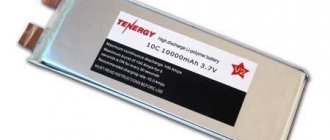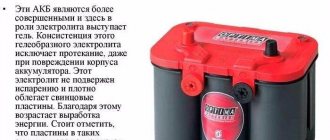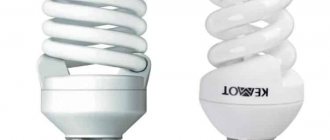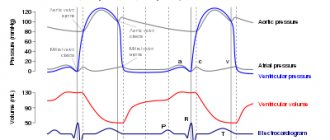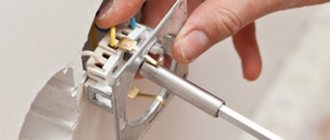Warm floors in a groove, installation technology and methods of grooves. Pros and cons of this method
The “warm floor” heating system has become very popular today; it is used as the main or additional source of heat. The technology for laying heated floors depends on its type. Thus, a water circuit or electrical cable is usually mounted in a screed. But what to do if there is already a ready-made screed on the floor? To do this, there is the option of laying a heated floor in a groove.
Warm floor in grooves
Advantages and disadvantages of laying heated floors in a groove
This installation method has its advantages and disadvantages.
- Saving costs on purchasing mortar for a new screed. If the old screed is in good condition, you won’t have to remove it and throw away the money spent on installation.
Saving time on dismantling the old screed, it is much faster to perform gating on an already finished surface.
- When laying pipes in grooves, it is not possible to lay a heat-insulating layer with a reflective effect, which will entail heat loss due to the spread of heat to both sides of the concrete base.
- The pipes are too close to the finish coating, which can cause it to dry out. The floor temperature should not exceed 26 degrees.
- For normal heating operation and to prevent damage to the floor covering, you will need to make a small layer of screed on top (20 mm), which will raise the floor by this distance.
- The gating process is quite labor-intensive.
- When chipping, the integrity and properties of the screed are violated.
Grooves for laying heated floors
Important! Even placing foil in the grooves under the pipes will give minimal effect, since the reflector only works if a thermal substrate is installed.
Methods and technology for floor gating
Floor grooves are created in different ways:
- Using a hammer drill. This tool creates very rough openings with broken edges.
- Using a grinder with a hammer drill. Using a grinder with a diamond disc, grooves are made along the screed, which are then cleaned using a hammer drill. This method is accompanied by a large amount of dust.
- Using a construction wall chaser. Not everyone has such a device, but for gating it is the best option. It is equipped with two discs and a vacuum cleaner that reduces dust emissions. The grooves made by this device are even and smooth. If there is concrete left in the openings, cleaning is done using a hammer drill.
Wall chaser for creating grooves
Strobe creation technology
Before starting work, the surface is marked depending on the method of arrangement of pipes or cables.
- The arrangement of pipes is in the form of a snail. This installation scheme ensures uniform heating of the room, since it alternates between cold and warm water flow. Hot water, passing around the entire circle, moves further, rushing to the center of the room. Then, reaching the center, it changes direction and comes back.
- Snake. In this version of the pipe arrangement, the coolant first moves along the edge of the room, passes under the windows, moving to the next strip. So, gradually cooling down, the water returns to the beginning of its movement, which causes a difference in the temperature of individual sections of the floor.
The difference in temperature for small rooms is almost unnoticeable, but for large rooms it is very noticeable.
When using a serpentine pipe arrangement, the coolant is supplied from the cold wall side.
Types of floor heating pipe laying schemes
Important! The heat flow depends on the pitch of the pipe or cable. The recommended step is from 10 to 30 cm.
Technology for laying heated floors in grooves
The technology for laying a heated floor system in grooves consists of the following steps:
Surface preparation
- After scoring the concrete screed, the surface is cleaned of dirt and dust. To do this, use a broom and a vacuum cleaner.
- Reinforced foil is placed at the bottom of the groove, acting as a reflector.
Laying pipes or cables
- The pipes are placed along the grooves on the previously laid foil. The foil should not envelop the pipes so that the heat spreads to the sides and upwards.
- To fasten pipes in grooves, special clips of different diameters are used.
The fastening technology consists of drilling, driving in dowels and screwing in screws. The pipe is secured using a crimp clamp with an elastic band.
Advice! When laying the wire, there is no need to make a foil backing, since the groove holes are very thin.
- Having installed the entire heating system, install the temperature sensor. To do this, a corrugated tube with a plug at one of its ends is placed in the groove for the sensor. This prevents cement from getting inside the tube.
- After sealing the corrugated tube, a sensor is inserted inside.
- A tube with a connecting cable for the temperature sensor is also installed.
- Install a thermostat and connect a temperature sensor to it.
Laying the cable in the groove
The next stage is filling the pipes or cable with solution . But before this, commissioning work is carried out to detect leaks in the heating structure.
Types of solutions for sealing pipes or electrical cables
- cement-sand mortar;
- cement-sand mortar with the addition of tile elastic adhesive (about 1/5 part);
- special repair composition for load-bearing concrete structures, which has particular strength;
- SIMMIX s-10 masonry mortar.
Nuances when filling pipes or cables with solution
- The main purpose of sealing pipes with mortar is to fill all air spaces. The solution should fill even the smallest gaps.
- When using cement-sand mortar with tile adhesive, it is prepared with a consistency that is not too thick. The solution must be poured, not laid, otherwise, when air spaces arise, the heating efficiency will decrease.
- If a cable is laid in grooves, then if there are voids, it will overheat, which will lead to failure of this section, and then the entire system.
- When using a cement-sand composition, the solution must be made thicker and pushed into the gaps.
Important! The solution should be neither too thick nor too thin.
- When pouring, the surfaces are leveled using a spatula.
- The layer thickness must be at least 20 mm.
Sealing a heated floor with mortar
Laying the finishing coating
After the top layer of the mortar has dried, you can proceed to laying the floor covering. To do this, it is necessary to carry out a number of activities:
- Clean the surface from dust or other types of contamination.
- Cover the base with a layer of primer.
- Lay aluminum sheets and heat spreaders.
Having prepared the surface, you can lay the flooring.
Why prime the base?
Before laying the finishing coating, it is recommended to cover the base of the concrete floor with a layer of primer. The purposes of such processing:
- Improving the adhesion of the finishing layer.
- Preventing the top layer of screed from coming off due to thermal expansion. This is especially true in cases where a leveling mixture was additionally used to level the surface. A deep penetration primer is capable of penetrating to a depth of 1–2 cm.
- Strengthening the adhesion of the adhesive composition when used as a finishing coating for tiles. If you glue the tiles without first priming the base, then after a few months, when the base is heated to 25 degrees, the tiles will begin to come off.
Video: Technology for laying heated cable floors in grooves.
Laying a heated floor into a finished screed is done by gating the base according to the selected pipe or cable laying pattern. The heat transfer of a heated floor with this installation method is no worse than with conventional installation. If you do everything according to technology, the heated floor will last a long time with maximum heat transfer.
Standards and restrictions when tapping walls for wiring
You should not pick up the tool and crush the wall before the preparatory procedures have been completed. Make sure you don't go overboard with the number of outlets, switches, and other points. Each device must be available. Placing ten sockets on one wall “just like that” does not make sense. It is necessary to take into account the material of the wall and select the necessary tool accordingly.
SNiP 3.05.06-85 specifies regulatory documents that are important to consider when distributing cables along walls. Ideally, you need to thoroughly study them so as not to have to do repeated repairs later.
Key points from the rules:
- Horizontal and vertical arrangement of grooves, absence of oblique lines with minor exceptions (for example, in the attic).
- The maximum is one turn of the groove connecting the two closest points, since the wire bends, which leads to slight overheating. The presence of two or more hot spots will result in a dangerous situation.
- The maximum width of the groove is 30, depth – 25-26 mm. The total length of the cable route running through the grooves from the distribution box to one point or another should be no more than 3 m.
- The distance from the battery and gas pipes is 400 mm (although we recommend increasing it to at least 500), doors – 100, ceiling and floor – 10 mm.
- It is prohibited to trench internal load-bearing walls. A groove of the maximum depth indicated above will not have a negative impact on the external part of the load-bearing wall, but special permission is required for partitions in the apartment. This issue is especially relevant for panel-type houses. You need to be especially careful when gating walls on the ground floor of a residential building with two tiers or more, since in addition to the roof, the walls also support the rest of the structure.
- Avoid gating in reinforced concrete structures, which can lead to destruction of its integrity and loss of strength. If there is an urgent need, you will have to make do with small grooves or use cable channels located on the surface of the wall.
- When making grooves on the ceiling, calculate the shortest path to the lighting fixture and lay it.
- It is prohibited to trench floor coverings. If you need to place wiring on the floor, then the best solution is to hide the cable in a concrete screed. On the other hand, try to avoid even this: imagine the consequences if the cable in the floor burns out.
- It is easier to groove brick walls, more difficult - concrete ones. This is where you need to start when choosing a tool.
- Protect your respiratory tract with a special mask or respirator.
Advice! Gating is accompanied by loud noise, and due to the fact that the process affects the walls, vibration only enhances this effect. All neighbors in the house will hear you, so perform the process exclusively during the time established for this work (usually from 10 to 17 hours).
Is it possible to groove a floor screed?
In general, it’s impossible. But if you really want it, then in a solid or welded iron pipe with the ends bent down so that moisture does not accumulate
In general, it’s impossible. But if you really want it, then in a solid or welded iron pipe with the ends bent down so that moisture does not accumulate
Maybe a person is doing a dry screed. Then the floor is an ideal option.
Over time, water may leak through cracks and pores. Concrete is slightly hygroscopic
In addition to PVC insulation, the NYM cable also has rubber (?) insulation. Does this cable have waterproofing properties?
The corrugation, as far as I understand, is only needed to avoid damaging the wire itself when pouring the screed. The better the cable channels in the screed (obviously there is more fuss with them). Because they are less likely to be damaged during installation and water is less likely to get into them?
Maybe there are inexpensive cables with durable and even better insulation that you can walk on when pouring the screed?
And if it is not laid under a screed, then how? Monolithic columns are regularly found along the walls; they cannot be dug. But I don’t want to make the plaster thick.
vvk0
The NYM cable, in addition to PVC insulation, also has rubber (?) insulation.
Does this cable have waterproofing properties? If it's rubber, then it has it.
In general, it is better to have a cable with some kind of armor (so that it can withstand the weight of the tie, a person and furniture). There is no armor - we put it in the pipe.
It is also desirable to have a hydrophobic filler
Adding from 10/23/2009 10:49:
FAEFAE
is completely normal, it is laid corrugated on the floor slabs and then filled with screed.
How many years have such solutions been working? Has anyone inspected these cables while in use?
Adding from 10/23/2009 11:06:
vvk0
The NYM cable, in addition to PVC insulation, also has rubber (?) insulation.
No, something gray springy there is not rubber, it’s something based on (you won’t believe it) chalk, if sclerosis doesn’t let me down.
Adding from 10/23/2009 11:07:
Jamal
should have a cable with some kind of armor (so that it can withstand the weight of the tie, a person and furniture).
There is no armor - we put it in the pipe. Also, it is advisable to have a hydrophobic filler. Is it difficult to link?
Vovan
in the floor preparation layer or in the voids of building structures, carried out with cable or insulated wires in a protective sheath.
This raises the question of what is meant by a protective sheath, and what kind of cable is allowed to be laid. PVC insulation is also, in some way, a protective shell
Would it be difficult to provide a link?
I described how I would do it myself. Purely common sense. Therefore, I can’t give a link
Jamal
Here the question arises, what should be understood by a protective shell
? Well, not a pipe, and especially not a metal one - that’s a fact.
and what kind of cable is allowed to be laid.
See cable docs.
PVC insulation is also, in some way, a protective shell
Well, NYM is possible.
I described how I would do it myself. Purely common sense.
You know, this is a rare case when common sense almost coincides with the correct answer.
True, there is nothing about water there, but only about maintainability: quote ( PUE
): 7.1.37.
Electrical wiring in the premises should be replaced: hidden - in the channels of building structures, embedded pipes; The use of permanently embedded wiring in panels of walls, partitions and ceilings, made during their manufacture at construction industry factories or carried out in the mounting joints of panels during the installation of buildings, is not allowed. Therefore, I can’t give a link.
But, well, that is, you give advice on electricity without having seen the PUE?
Vovan
And, well, that is, you give advice on electricity without having seen the PUE?
Em. This is exactly the case for which there is no answer in the PUE, so you have to be guided by what is there.
Or did you see in the PUE a description of what kind of cable can be used and what parameters the wire insulation should have?
Adding from 10/23/2009 15:13:
Well, not a pipe, and certainly not a metal one, that’s a fact.
And absolutely everyone knows this fact, so it cannot be described in the PUE?
Well, NYM is possible.
Where such confidence?
See cable docs.
This is correct, you need to watch. But there is one more question: what parameters need to be looked at and what values they should have.
And precisely because such cable laying is not described in sufficient detail in the PUE, I take a supply in the form of an iron pipe and a hydrophobe. If you have positive experience using cables without hard protection and waterproofing, please share.
Vovan
"Designed for .
"won't fit? If the cable is certified in Russia and has the appropriate inscription in the passport (“intended for installation inside a floor screed”), then, in theory, it will be suitable. Do you have an example of a cable for laying in a concrete floor in a residential area?
PS: laying simply “into concrete” is not suitable - you just need “pouring into a concrete floor” or something similar, otherwise the cable for laying in the wall may not be suitable for laying in the floor
Jamal
Em.
this is exactly the case for which there is no answer in the PUE How do you mean “no”? Have you noticed where my quotes come from?
And absolutely everyone knows this fact, so it cannot be described in the PUE?
When something is subject to description in the PUE, they write it there, and they are not shy: quote (
PUE
): 7.1.38. Electrical networks laid behind impenetrable suspended ceilings and in partitions are considered as hidden electrical wiring and should be installed: behind ceilings and in the voids of partitions made of flammable materials in metal pipes with localization capabilities and in closed boxes; behind ceilings and in partitions made of non-combustible materials - in pipes and ducts made of non-combustible materials
This paragraph says nothing about the gasket inside the floor.
Vovan
For this, I suspect, there are all sorts of SNiPs, etc.
things. Well, it seems like we are talking about the design of an electrical installation - just for the PUE.
Vovan
But you can’t pour it into the walls - you have to fill it
in the grooves of the walls
How are these furrows filled in later? a liquid solution from which the moisture then partially evaporates, partially absorbs, and partially flows down. Haven't you ever sealed up a groove?
Vasil Lich,
is it possible to lay electrical wiring in a groove along the floor of an apartment?
if so, is it just a wire, in a corrugation, pipe or something else? Well, this is where the guys wrote.
The floor slab itself cannot be chipped. Because the top of the slab works under compression and when chipped, the slab can break. But in a leveling screed on top of the slab - it IS possible and necessary.
It is not advisable to monolith the wire directly into concrete - the insulation is flimsy. But the CABLE (VVG and its variations, NYM) can be laid directly in the groove and covered with a solution. True, the “Electrical Installation Rules” recommend making the wiring replaceable, i.e. laid in a PVC corrugated pipe, but allow permanent wiring. This is at the discretion of the owner. If the screed is just being made, it is better to put the cables in the corrugation.
Moisture does not matter at all for the CABLE - because these cables can work in damp soil for years (although it is not recommended, because they can be chewed by mice and moles). And all the moisture will evaporate in a week or two.
But low-quality PUNP-type WIRE from underground production in fresh raw concrete can leak. Cases have been described in which people were shocked by electric shock while wallpapering.
How to make grooves for wiring in aerated concrete
When laying walls made of aerated concrete or foam concrete, they have to be reinforced. The reinforcement is placed in cut grooves - grooves. For this purpose there is a special groove cutter for aerated concrete. This is a metal pipe with a handle and a protrusion at the other end.
Wall chaser for gas blocks
The process is very simple - you need to pull the tool, pressing it to the surface. Foam aerated concrete is easy to process, so there are no difficulties. You can, of course, use a circular saw or angle grinder, but there will be many times more dust, which is not pleasant in the room.
How to lay electrical and communications in an old screed
N
Often, when renovating a secondary home, the old cement-sand screed does not require replacement, which even after 30-50 years can look and “feel” excellent. Also, in an already installed screed, sometimes it is necessary to lay communications, although communications are laid before its construction, but you never know, sometimes something is forgotten.
Let's look at how to easily and quickly groove a screed, be it old or new, and lay there what we need (cables, pipes).
How to stitch a screed, what are the options?
There are several options, as with → gating walls for electrical installations; in principle, the screed is no different from the walls. This:
- Grooving using a wall chaser (furrow maker) - a professional tool for installing grooves. Not everyone has such a tool, but if something happens, you can rent it and calmly, after studying the tool for an hour or two, having practiced, make neat furrows of the required length and width.
- With a grinder you can make furrows in the screed without much difficulty. The downside is a lot of dust if you don’t use it in conjunction with a vacuum cleaner.
- With a chisel and hammer , if the screed is soft enough and you don’t need to remove it much.
- Using a hammer drill is not very convenient, or rather not very safe, since you can inadvertently gouge large pieces of the screed and you will have to refill it.
All these methods can be combined with each other, for example, to make grooves with a grinder, and knock out the material with a hammer drill or chisel. Let's look at each method separately, but first the basic rules.
Let's turn to the law
I repeat from the previous article, in SNiP, SP and GOST there is no direct ban on gating walls in panel houses. For Moscow there is a Government Decree “On the procedure for reorganizing premises...” clause 11.11, where it is prohibited:
Make grooves (grooves) in horizontal (!) seams and under internal wall panels, as well as wall panels (!) and floor slabs (!) for electrical wiring and piping.
But Moscow is not all of Russia, and I would like to understand more precisely whether it is possible or not to trench walls in panel houses.
Basic rules for gating old screed
There are several basic rules when gating using any of the methods, especially for old screeds. The fact is that the old screed contains wiring, often it is aluminum and without corrugation (without any protection). Therefore, you first need to check the screed for wiring. If your wiring has changed or is currently changing, then this is not necessary if it is not energized. Although usually the cable is not laid in the screed, but under it, in a layer of insulation - sand. If you have a layer of sand under the screed, then most likely the cables are located there and if you cut out the screed material to a depth of 1-2 cm, nothing bad will happen, but it’s better to play it safe and check.
Checking for cable presence in the tie
There are several ways to check for the presence of a cable in the tie. They are similar to checking walls, but with a small nuance - the cable can be placed in any order, not at 90-degree angles.
The easiest way is to check whether there is wiring in the screed using an electrical tester with a non-contact testing function. The wiring must be live.
Gating rules
Laying wiring in a groove is a closed installation method. The remaining hole is then sealed flush with the wall, after which finishing materials are applied. That is, then it is difficult to determine where exactly the wiring goes. From an aesthetic point of view, this is good, but from a practical point of view it brings obvious inconveniences: when working on drilling holes in the walls, you have to take into account that there is wiring somewhere there. You can find it using special wiring detectors, but the wiring itself must be predictable. To do this, we have developed a number of rules that must be followed in both apartments and houses:
- Grooves are made only vertically and horizontally. Sloping lines are only possible when laid in spaces with sloping walls - in attics, residential attics, on stairs. In this case, the grooves are made parallel to the inclined surface.
Walls can be tapped for wiring only vertically or horizontally - From utility networks - gas pipes and heating pipes - grooves for laying wiring must be located at a distance of at least 50 cm.
- When laying the grooves under the ceiling, 15-20 cm retreat from the corner downward. If, when upgrading the wiring, it is necessary to lay another branch, it is also lowered by 15-20 cm.
- You must retreat at least 10 cm from corners and openings (windows and doors).
- The depth and width of the groove depends on the dimensions of the installed wiring, but usually up to 20 mm is enough. Maximum allowed 25*25 mm. This depth may not be enough if the wire is laid in a corrugated sleeve or metal tray. In this case, the groove can be deepened a little. But, if there is a layer of plaster on top, you don’t have to deepen it - a few millimeters will easily be covered.
Only at right angles and nothing else - If there is a metal frame in the wall, you absolutely cannot cut it. We are usually talking about reinforced concrete structures. In them, the frame is a steel wire that is located at a depth of 4-5 cm. So 2 cm is normal, but even when laying large-diameter cables, the metal cannot be disturbed
- If there is a sufficiently large layer of plaster on the wall, the wires can be laid in the thickness of the mortar. This is easier than making a groove in the base material.
- When connecting to a socket or switch, the depth of the groove can be slightly increased so that the wire fits well into the installation box. But even in this case, the metal frame cannot be damaged.
These are general rules that apply to gating walls for wiring.
How to groove an old screed for electrical or communications
Let’s look at each method in more detail and tell you about the nuances.
Grooving the screed with a wall chaser (furrow maker)
The simplest and most effective way. We just need a wall chaser and a vacuum cleaner. The kit costs from 8-10 thousand rubles. (2019, Russian Federation). Not everyone can afford it and not everyone needs it on an ongoing basis, so you can rent it for 2-3 days - this is enough to practice and build a 3-room apartment.
Be sure to install diamond discs for concrete, preferably new ones. After watching the video below, you will understand how to groove a screed with a wall chaser.
Scoring the screed with a grinder
A simple, convenient and very affordable option to make grooves in the screed. The only negative is a lot of dust.
To begin with, using a marking cord with paint or a rule and a pencil, we will mark the lines along which the furrows need to be made. It is desirable that the lines are as straight as possible.
Next, use a grinder with a disc to cut furrows along the stone to the required depth. To avoid dust, you can suck it out with a vacuum cleaner (you need to use a construction vacuum cleaner, a regular one will quickly clog, and you will need an assistant. Another option to get rid of dust is to moisten the cut site with water from a spray bottle, at the same time as punching; the lack of wetting means the dust turns into dirt.
The groove can be cut at 90 and 45 degrees. The disadvantage of the first method is that you will need to gouge out the material between cuts, but in the second case this practically does not have to be done.
→ How to use the grinder is described in one of the materials on the site.
Making grooves in the screed with a chisel and hammer
A chisel and hammer are rather poorly suited for scoring screeds. They can be used only in short areas or used to knock out material from grooves cut with a grinder or wall chaser. In general, it is better to use a chisel (chisel) and a hammer as an auxiliary tool.
Scoring the screed with a hammer drill
Using a hammer drill, you can select material from cut grooves. It is highly not recommended to hammer the screed with a hammer drill, since the tool is quite powerful and can damage the screed, it may crack and you can knock it out in whole pieces. It is not necessary.
When scoring a screed, a hammer drill can be used to remove material in the grooves between cuts.
Ideal, fast and most budget option:
- make markings,
- cut the grooves with an angle grinder (“grinder”),
- select the material in the grooves with a hammer drill,
This is the end of the story, I hope everything works out for you, and if not, ask questions!
Leave your tips and comments below. Subscribe to our newsletter. Good luck to you and good luck to your family!




